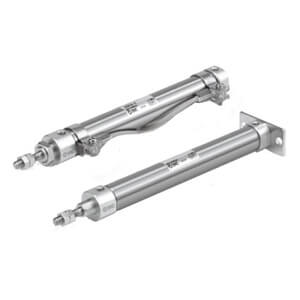Cylinder material selection and performance optimisation
2023-07-20As a common actuating element, the choice of material for cylinder cylinders is critical to ensuring the performance, reliability and durability of the cylinder. There are a number of points to consider when selecting materials for cylinder cylinders to meet specific application requirements and environmental conditions.

The strength and stiffness of the material is an important factor in choosing a cylinder material. Cylinder cylinders need to be able to withstand pressure and force, so the material must be strong and stiff enough. Common cylinder materials include aluminium alloys, stainless steel and carbon steel. Aluminium alloys are typically used for light duty applications, stainless steel offers advantages in corrosion resistance and high temperature environments, while carbon steel is suitable for general industrial applications.
Corrosion resistance is an important consideration, and if the cylinder will be used in wet, acidic, alkaline or other corrosive environments, a material with good corrosion resistance needs to be selected. Stainless steel is a commonly used corrosion-resistant material, and stainless steel grades 304 and 316 in particular offer excellent performance in wet and corrosive environments.
Temperature resistance is also a key point of material selection. Cylinders operating in high or low temperature environments require the selection of materials that can withstand extreme temperatures. For high temperature applications, common choices are high temperature resistant alloys or ceramic materials. For low temperature applications, it is common practice to select cryogenic steel or polymer materials.
It is also important to consider friction and wear. The piston of the cylinder rubs against the barrel, so materials are selected for their friction and wear properties. For applications with high friction and wear requirements, such as high speeds and frequent reciprocating motions, materials with good wear resistance, such as those with surface coatings or added lubricants, can be selected.
Cost considerations also need to be taken into account. The cost of different materials varies considerably, so it is necessary to take into account the needs of the application, performance requirements and budgetary constraints in order to select the most economically appropriate material. —>>Write this article in more detail
This blog has opened my eyes to new ideas and perspectives that I may not have considered before Thank you for broadening my horizons
This covers all the important points. Grab your favorites before they sell out at Best Deals Shoes.